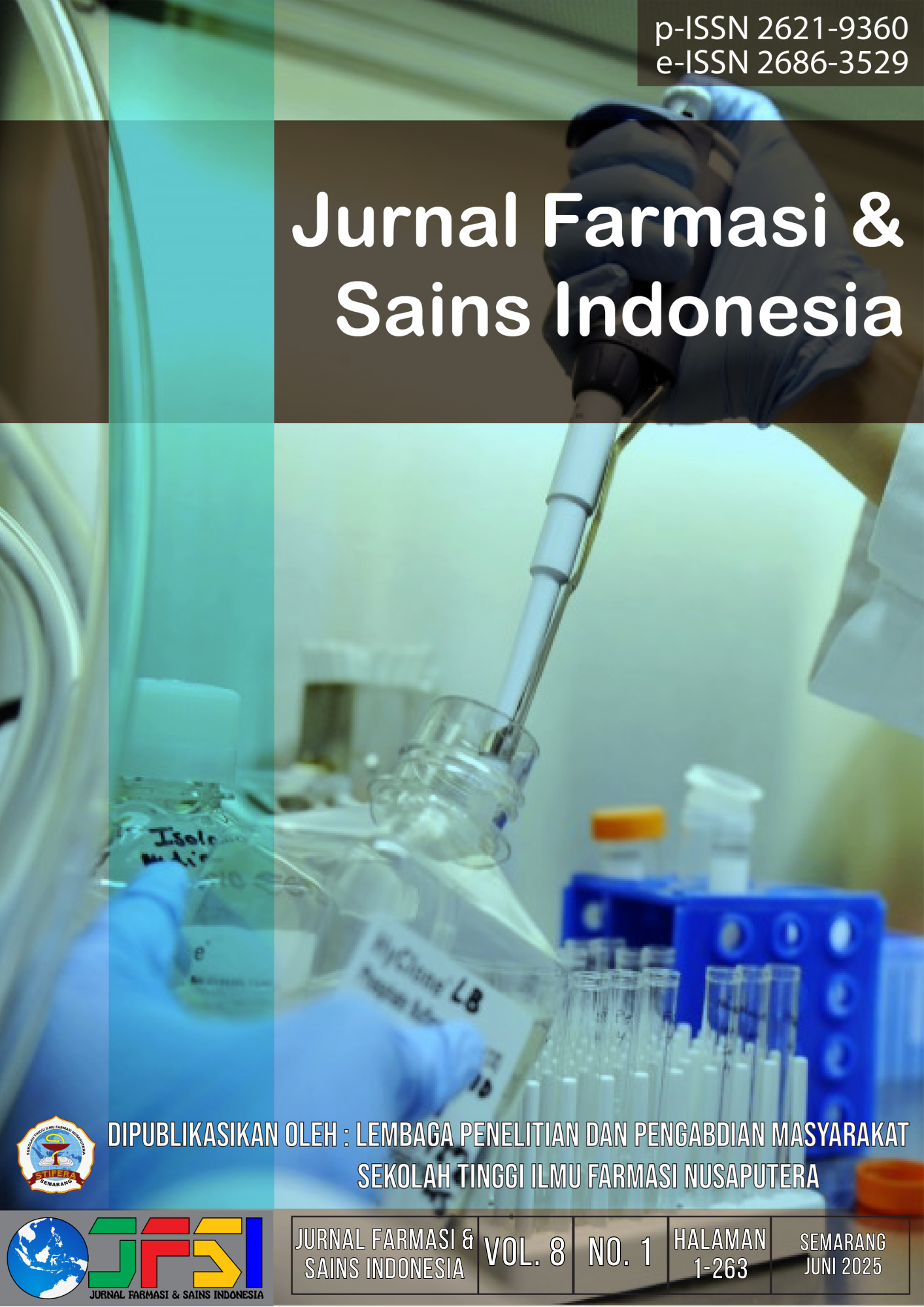Phytochemical Study of Pineapple Peel: Effect of Drying Method on Flavonoid Content of Ethanol Extract Studi Fitokimia Kulit Nanas: Pengaruh Metode Pengeringan terhadap Kandungan Flavonoid Ekstrak Etanol
Main Article Content
Abstract
Food waste refers to discarded food materials at the final stage of the food supply chain. One such waste product with potential for utilization in traditional medicine is pineapple peel (Ananas comosus (L.) Merr.), which contains various secondary metabolites, including flavonoids, alkaloids, saponins, and tannins. Among these metabolites, flavonoids are well-known for their antioxidant properties. This study aimed to compare the total flavonoid content in ethanol extracts of pineapple peel subjected to two different drying methods. The drying methods used were sun drying and oven drying at 50 °C. The dried pineapple peels were extracted using 96% ethanol through the Soxhlet extraction method. Phytochemical constituents were identified through colorimetric reactions and Thin Layer Chromatography (TLC). The total flavonoid content was determined colorimetrically using AlCl₃ reagent and measured by UV-Visible spectrophotometry at a wavelength of 439 nm, with quercetin used as the standard. The results indicated that the extract yields from the sun-dried and oven-dried samples were 5.60% and 5.75% (w/w), respectively. TLC analysis revealed Rf values of 0.85, 0.80, and 0.91. The total flavonoid content in the sun-dried sample was 35.44 ± 0.55 mgQE/g, while that in the oven-dried sample was 25.40 ± 0.98 mgQE/g. Statistical analysis using the Independent Sample t-test demonstrated a significant difference in total flavonoid content between the two drying methods.

